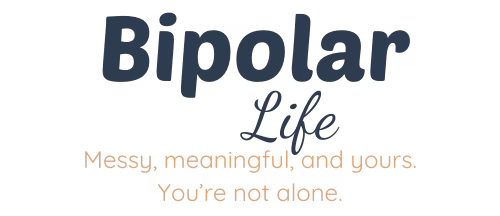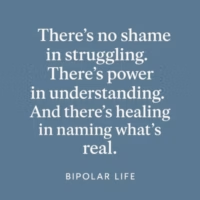Mapping Your Journey: How Life Charts Can Help You Understand and Manage Bipolar Disorder
When you’re living with bipolar disorder — or wondering if you might be — a life chart or life map can be a powerful, eye-opening tool. It offers a visual and emotional record of your experiences over time, helping both you and your mental health provider identify important patterns that may otherwise go unnoticed.
These maps typically include past events, emotional highs and lows, and more current symptom tracking. While memories from years ago may be a bit foggy, they still hold value—especially if they involve moments of deep depression, suicidal thoughts, or intense manic episodes. Even if it happened 10 or 20 years ago, it matters.
What Makes Life Charts So Useful?
Life charts are much more than just a record of moods or events; they’re a mirror into your inner world. They can illuminate patterns in your mental health that might otherwise remain hidden, such as the cyclical nature of depressive or manic episodes, or recurring reactions to stress. But perhaps even more profoundly, they can surface parts of your story that have been long buried.
As you begin charting your past and present experiences, you may uncover old traumas or emotional wounds that you never fully processed—moments that seemed “normal” at the time but actually left a deep impact. Recognizing these hidden injuries can be the first step in healing them.
Unhealed doesn’t mean broken. It means there’s still space to bring in compassion, understanding, and care.
On the flip side, life charts can also highlight your resilience and strengths. You may notice times when you pushed through adversity, showed up for others despite your struggles, or discovered unexpected sources of joy and purpose. You’ll begin to see the blessings that coexisted with the battles—the people who supported you, the choices you made to keep going, and the insight you’ve gained along the way.
This process of mapping your emotional landscape offers:
- Self-awareness: Recognizing your emotional patterns helps you respond, not just react.
- Healing: Identifying past pain gives you a chance to address it gently and intentionally.
- Empowerment: Seeing your history in context reminds you of how far you’ve come.
- Hope: Discovering your strengths shows you what’s possible moving forward.
Ultimately, a life chart becomes both a diagnostic tool and a healing companion. It helps your provider understand you more fully—and helps you reconnect with parts of yourself that may have been overlooked or forgotten.
The Two Key Parts of a Life Chart
A well-rounded life chart usually has two main sections when used in an ongoing way:
Part 1: Identifying Triggers
Triggers are the situations, interactions, or stressors that often show up before a shift in mood—whether upward into mania or downward into depression. Over time, learning to spot these triggers can give you more insight and control over your mental health.
When mapping older periods of your life, especially from years past, you may not be able to recall every small detail or subtle shift. That’s completely normal. The goal at that stage isn’t necessarily to find every little trigger, but rather to notice how often and how intense your major highs and lows have been. This broader view helps in identifying the cyclical patterns that are characteristic of bipolar disorder.
As you move closer to the present in your life charting, however, you’ll likely start to notice more specific triggers or early warning signs—those subtle indicators that you’re heading into a manic high or depressive low. These might include:
- Trouble sleeping
- Sudden bursts of energy or irritability
- Emotional numbness
- Social withdrawal
- Feeling overwhelmed by everyday tasks
By tuning into these early signals, you can begin to see the emotional “weather pattern” forming before a storm. This awareness can be a game-changer in managing bipolar disorder because it allows for proactive steps — whether that’s adjusting your routine, reaching out for support, or using coping strategies to stay grounded.
The further back you look, the bigger the picture. The closer you are to now, the more detail you’ll see. Both are valuable pieces of the puzzle.
Part 2: Rating Your Symptoms
Rating your symptoms helps you track the intensity and progression of your moods over time. It brings clarity to what you’re experiencing, and when done consistently, can reveal the early signs of an oncoming episode or show the effectiveness of a treatment plan.
That said, there’s an important distinction between how we assess current versus past episodes.
Looking Back: Interpreting Past Symptoms
When reflecting on events from months or years ago, you may not remember the exact details or intensity of how you felt on a day-to-day basis. That’s okay. Instead of trying to give those moments a precise score or label, focus on what you do remember:
- “I couldn’t get out of bed for weeks.”
- “I was spending recklessly and barely sleeping.”
- “That was the month I felt unstoppable—and then crashed.”
- “I thought about ending my life every day that winter.”
These memories still carry vital information. Even if you can’t rate the exact severity, noting things like duration, disruptiveness, or emotional extremes helps paint a fuller picture of your mental health journey.
Sometimes, the activity level is the clearest signal: whether you were totally withdrawn or moving so fast your thoughts couldn’t catch up.
Rating Current Symptoms: Tools and Techniques
For more recent or ongoing tracking, you can be more specific. This is where tools like mood trackers, journals, or thought logs really shine. Whether you use a 0–10 number scale or descriptive emotion labels (like “calm,” “irritable,” “anxious,” “elated”), the key is to use the same scale consistently. This allows you and your provider to spot real changes over time.
Common tools include:
- Daily mood tracking apps
- Paper journals with rating scales
- Color-coded emotion logs
- Symptom checklists or graphs
Choose a method that feels manageable and natural for your lifestyle. If you try to do too much, it can become overwhelming—so start simple.
Remember: The goal isn’t perfection. It’s awareness—noticing when and how things shift.
By understanding both your past experiences and your present-day emotional rhythms, you’re giving yourself—and your mental health team—the insight needed to build a more effective, compassionate care plan.
How to Make It Work for You
Life charts are only effective if they reflect your real experiences, not an idealized or “tidy” version of your past. The goal is not perfection—it’s honesty and reflection.
Think of your chart as a living document:
- The past acts as a timeline—a broader landscape that captures major episodes, emotional plateaus, or moments when life felt like a rollercoaster. You may continue adding to it as you remember more.
- The present gives you a window into the day-to-day realities of managing bipolar disorder. It offers incredible insight into how you navigate mood changes, what triggers them, and what coping strategies actually help.
By understanding both, you build a bridge between where you’ve been and where you’re going.
🔍 Tracking Past vs. Present Symptoms
This visual can help you understand how to approach both ends of the timeline—honoring your history while staying grounded in the now.

Tips for Success:
- Don’t worry about gaps or inconsistencies — just start where you are.
- Use methods that feel intuitive to you (apps, journals, color coding, etc.).
- Bring your life chart to therapy or psychiatry appointments for richer conversations.
- Reflect regularly and adjust your tracking style as needed.
The act of charting itself is healing. It validates your experience and puts you back in the center of your own care plan.
Partnering with Your Provider
Tracking your experiences gives you more power in your mental health journey. It helps your provider see the bigger picture—beyond just how you’re feeling on a single day. This can lead to more informed decisions about medication, therapy, and other supports.
Note: Never stop or change your medication without consulting your provider, even if you’re feeling better.
If you’re struggling with how to track or what to include, ask for help. Your provider can guide you toward systems that work for your specific needs and goals.
Final Thoughts
Taking the time to create and use a life chart is an act of self-compassion. It’s not about being “perfectly stable”—it’s about understanding your unique rhythms, honoring your experience, and giving yourself the tools to live with greater intention and peace.
You deserve that clarity. You deserve that support. And you don’t have to do it alone.


